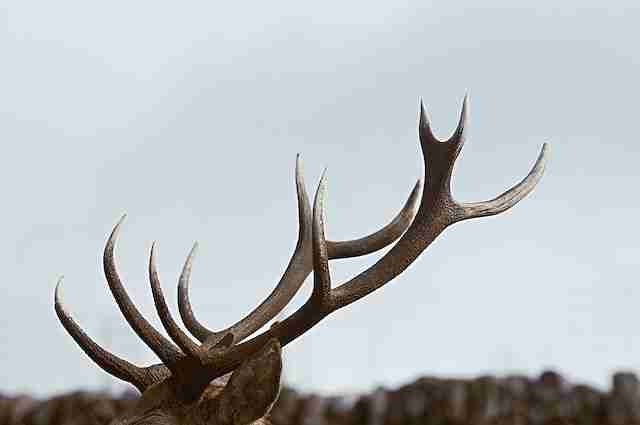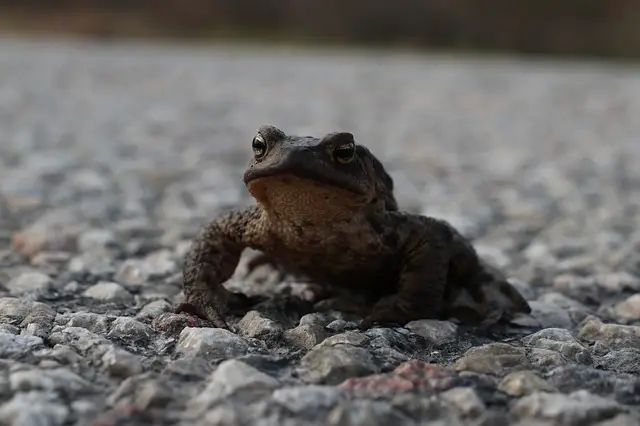Are Elk Antlers Safe for Dogs? (Explained)
Dogs are great chewers, which is why we often get them chew toys. However, many commercial products are not eco-friendly, which is why many of us explore natural options. Antlers, generally, are safe for the environment and might be perfect for dogs, especially when they’re digestible.
Two of the more popular antlers for dogs are deer and elk antlers. Besides being the largest option, elk antlers tend to be slightly softer than others, which is why it’s preferred by most owners. But how safe is it? Is there anything to worry about when giving them to your dogs? Let’s look into that!

What are Elk Antlers?
Elk antlers are the natural shed antlers from elk, a large species of deer native to North America and Eastern Asia. They are collected each year after the elk shed them as part of their natural growth process.
As I mentioned earlier, elk antlers are usually denser than deer antlers. In fact, they are probably the largest out there. They also contain more marrow, which is why they are a bit softer than the antlers of whitetail deer.
When you consider all these, elk antlers seem like a great option for dog chews.
Are Elk Antlers Safe for Dogs?
Elk antlers are generally considered safe for dogs; however, it needs to be the right source and quality. Elk antlers of low quality can pose several health risks, including dental and digestive problems.
Pros of Elk Antlers for Dogs
There are several advantages of using elk antlers over synthetic plastic chew toys for your dogs. Here are the most obvious ones:
- Elk antlers are natural options, which makes them safer and more eco-friendly.
- Elk antlers are long-lasting. In fact, they last longer than regular chew toys, especially for dogs that chew aggressively.
- They are usually odorless and create little to no mess (residue).
- Another benefit of elk antlers is that they are good for your dog’s health. This is because they contain minerals like calcium and phosphorus, which are beneficial to your dog’s health.
- Chewing on elk antlers can help remove plaque and tartar buildup on your dog’s teeth, promoting better dental health.
Cons of Elk Antlers for Dogs
- The primary concern with elk antlers is the risk of injury to your dog. This is due to their hardness, which may cause dental issues such as broken teeth.
- Elk antlers may not be suitable for all dogs, especially puppies, senior dogs, or dogs with existing dental issues. These dogs need to chew something that is softer.
- Elk antlers can be more expensive than other chew toys, depending on where you’re getting them from.
- Getting good quality antlers can be a challenge.
- Aggressive chewers may be at risk of tooth fractures or other dental issues.
- Smaller pieces of elk antlers can become choking hazards if your dog bites off and swallows them.
To minimize these risks, it’s crucial to monitor your dog while they are chewing on antlers.
Deer or Elk Antlers for Dogs?
Both deer and elk antlers are popular options for dog chews. Elk antlers tend to be larger and denser, making them more suitable for larger dogs or aggressive chewers. On the other hand, deer antlers are usually smaller and softer, which makes them a better option for smaller dogs or those with a dental condition.
There are many other advantages of deer and elk antlers; the choice ultimately depends on your dog’s size, age, and chewing habits.
Moose vs. Elk Antlers for Dogs
Moose antlers are another option for dog chews, but they are typically larger and flatter than elk antlers. They are not readily available as elk antlers, so you may have a hard time finding them unless you’re purchasing them online.
In that case, you can check out the Premium Alaska Moose Antlers by TBA. It is specifically made for adult dogs and serves as a chew toy. In general, moose antlers do not last as long as elk antlers, but they are still a good option.
How Long Should You Let Your Dog Chew on an Antler?
There is no specific time limit for chewing on an antler, but you should remove it if it becomes too small or if the dog starts to break it off into pieces.
So, do dogs eat antlers or just chew them?
Well, dogs primarily chew on antlers, but they may ingest small amounts of the antlers over time. This is generally not a concern, as most antlers are made of natural bone and contain essential nutrients, which makes them safe for the dog.
Can Puppies Chew Elk Antlers?
It is not recommended to give elk antlers to your puppies, as their teeth are still developing and could be damaged by the hardness of the antlers. Instead, you want to provide them with softer chew toys specifically designed for their age and size. Some of the best options are KIPRITII Chew Toys and Raw Paws Himalayan.
So, at what age can you give your puppy a deer antler?
It is recommended to wait until your puppy is at least six months old before introducing deer antlers. This allows their teeth to develop fully and reduces the risk of possible damage.
Choosing the Right Elk Antler for Your Dog
To ensure the safety of your dog, consider the following factors when selecting an elk antler:
Size
Choose an antler that is appropriate for your dog’s size and chewing style. Larger dogs or aggressive chewers may need a larger, denser antler, while smaller dogs or gentle chewers may prefer a smaller, softer antler. As a general rule, choose an antler that is longer than your dog’s muzzle.
Chewing habits
Consider your dog’s chewing habits when selecting an elk antler. Aggressive chewers may need a larger, denser antler, while more gentle chewers can opt for a smaller, softer option.
Age and dental health
Puppies and senior dogs may have more sensitive teeth and gums, so a softer, less dense elk antler may be more suitable for them.
Type of Antler
There are different types of elk antlers available, including whole, split, and branched elk antlers. Whole antlers are the most durable, while split antlers expose the marrow, which is softer and more palatable. Branched antlers offer a variety of textures. Consider your dog’s preferences and chewing habits when selecting any of these antlers for your dog.
Quality and Source
Look for high-quality antlers from reputable suppliers that are free of chemicals, preservatives, and additives. Ensure that the antlers are naturally shed and sourced.
It’s a good idea to inspect the antlers before giving them to your dog. Inspect it for any cracks, splinters, or sharp edges.
In addition, you should regularly check the antler for wear and tear and replace it if it becomes too small or develops sharp edges.
Always supervise your dog while it chews on the antler.
Alternatives to Elk Antlers
If you’re concerned about the safety of elk antlers for your dog, there are plenty of alternative chew toys to consider:
- Bully sticks: These natural chews are made from beef pizzle and are both long-lasting and digestible. Be sure to monitor your dog while they chew on bully sticks, as they can still pose a choking hazard if swallowed whole.
- Dental chews: Specially designed dental chews can help keep your dog’s teeth clean and healthy while providing a safer chewing experience.
- Nylon chew toys: For aggressive chewers, nylon chew toys can be a durable and safe alternative to elk antlers. Ensure the toys match your dog’s size and chewing strength.
- Rubber chew toys: Rubber toys, like KONGs, are a popular choice for dogs of all ages. They can be filled with treats or peanut butter for added entertainment and are generally safe.
Related Articles:





